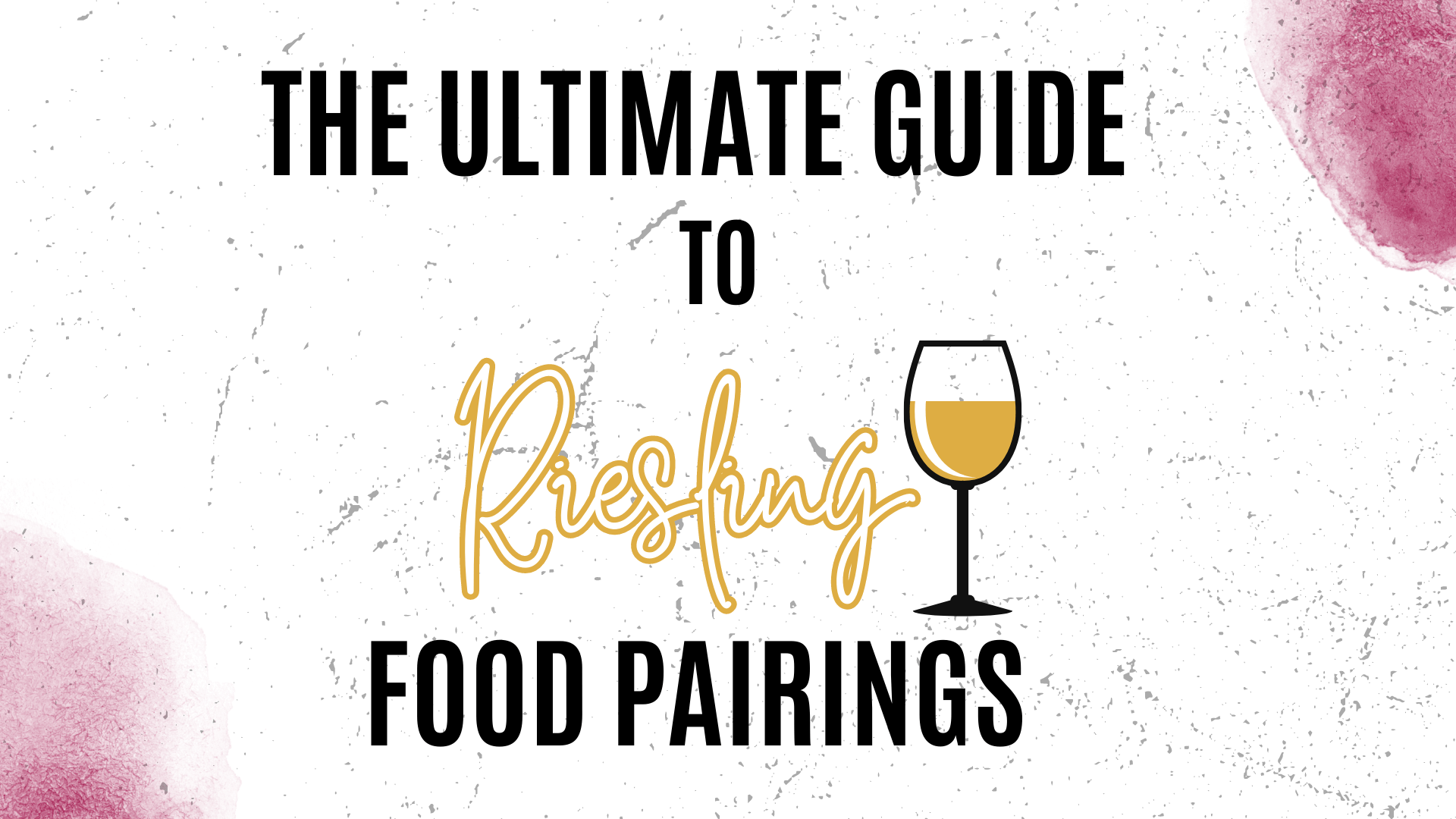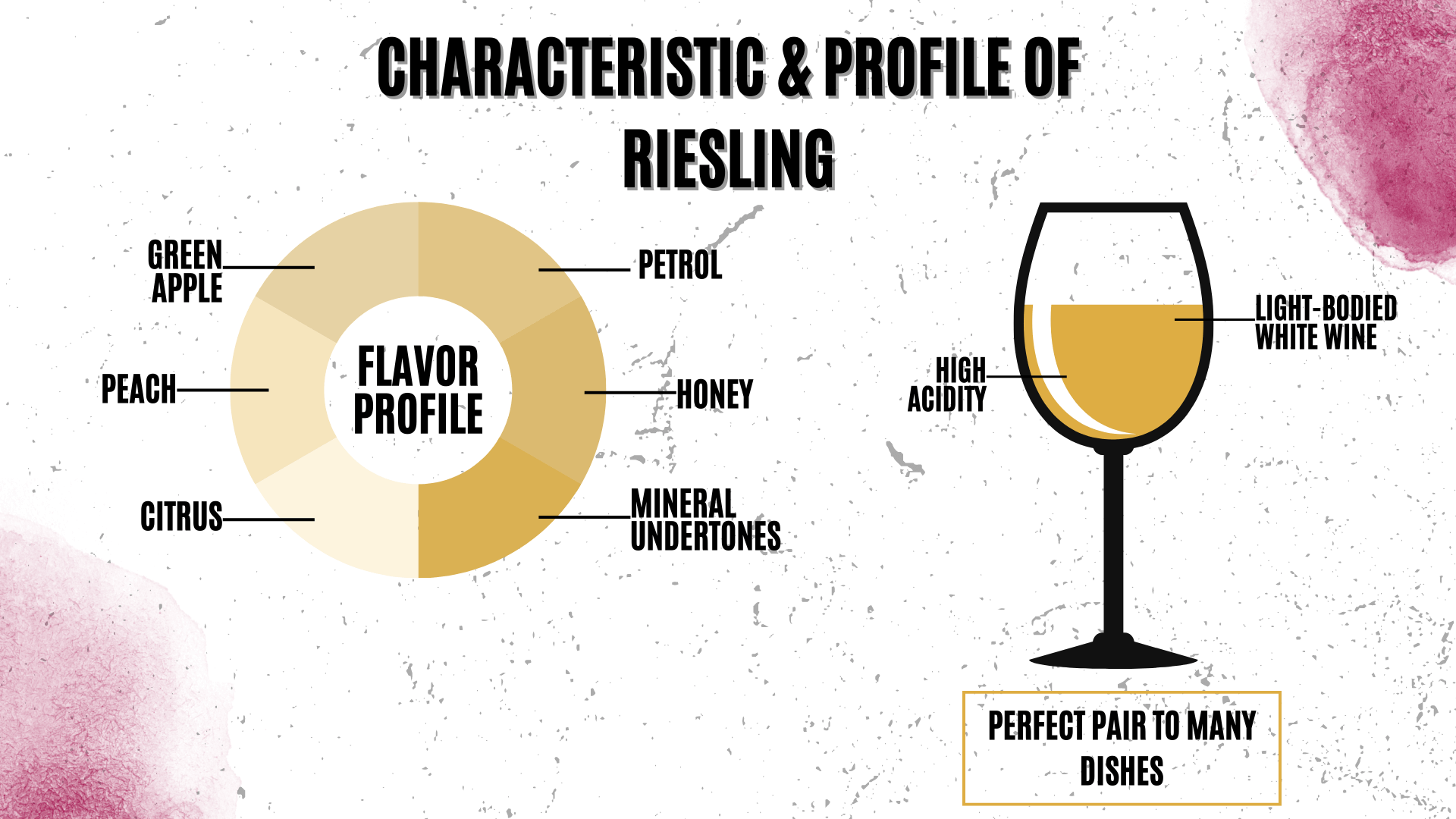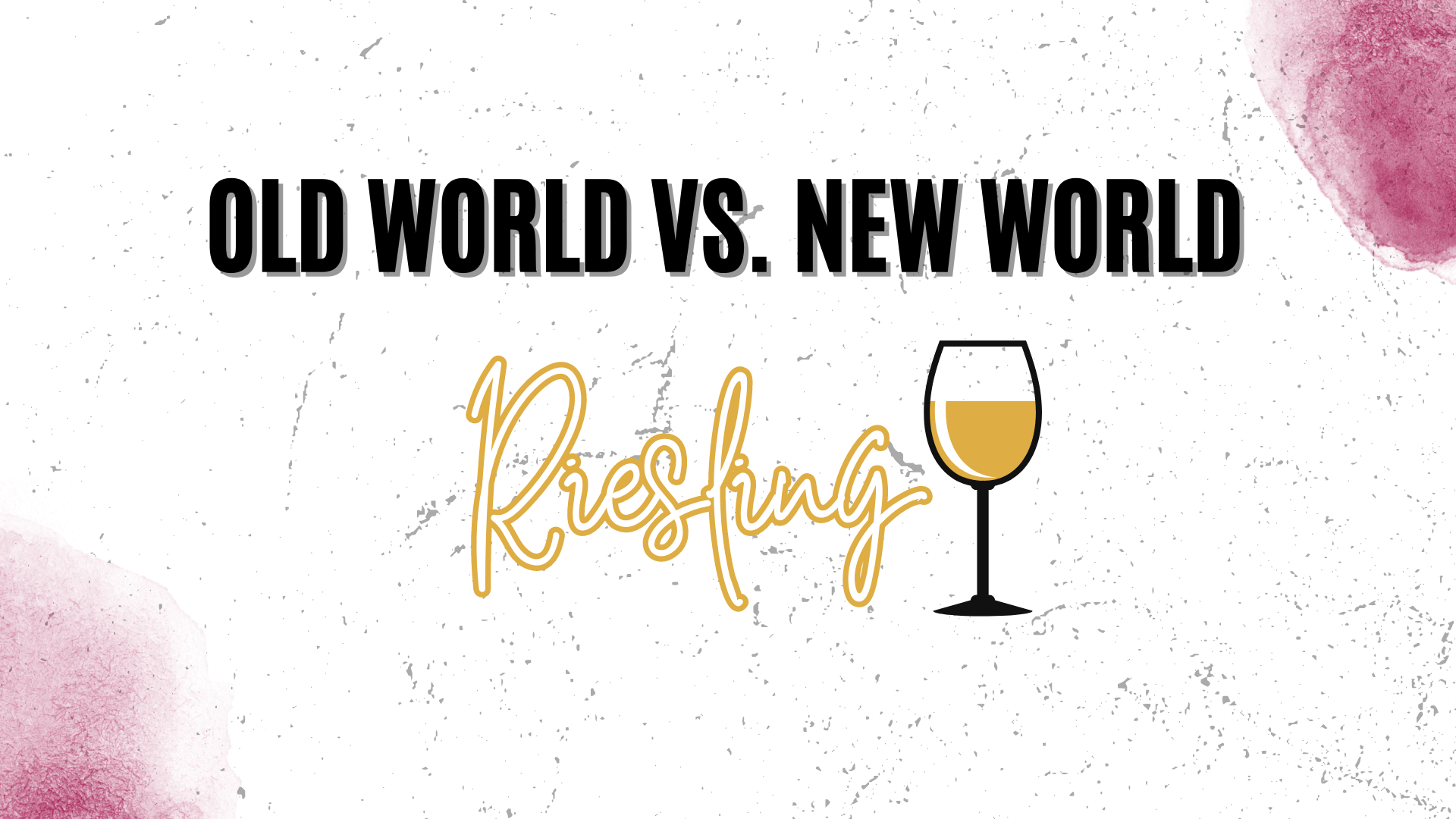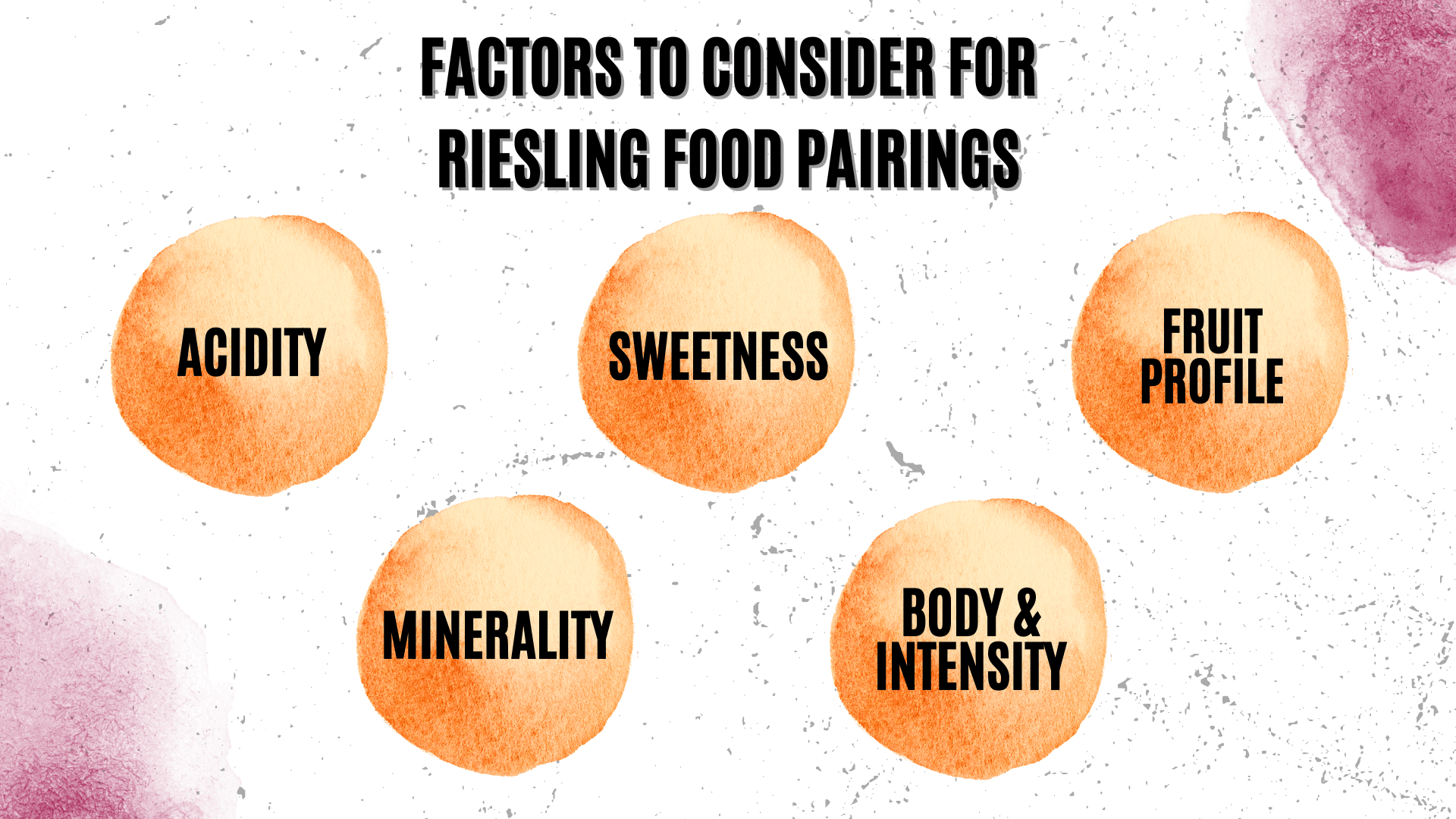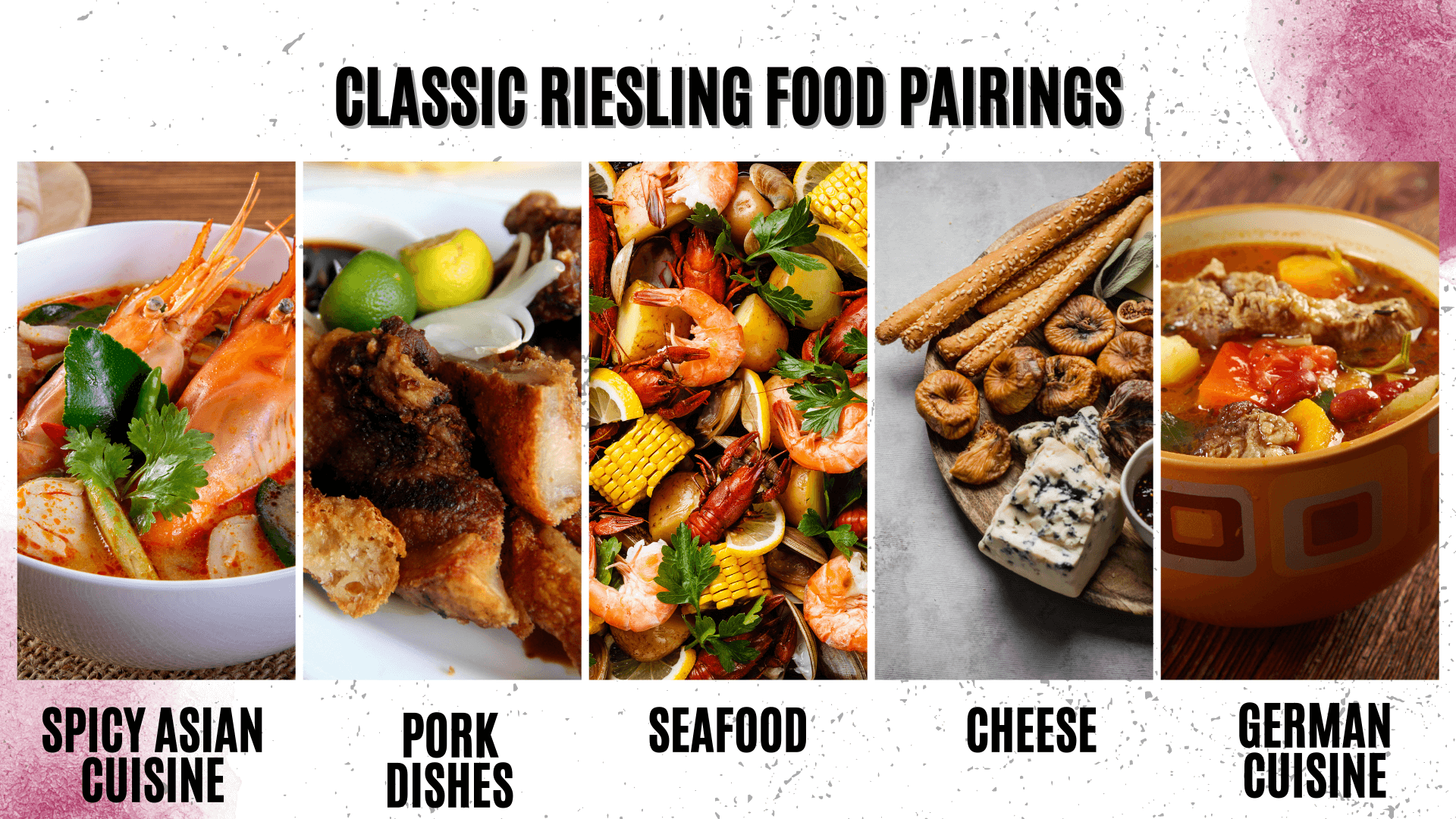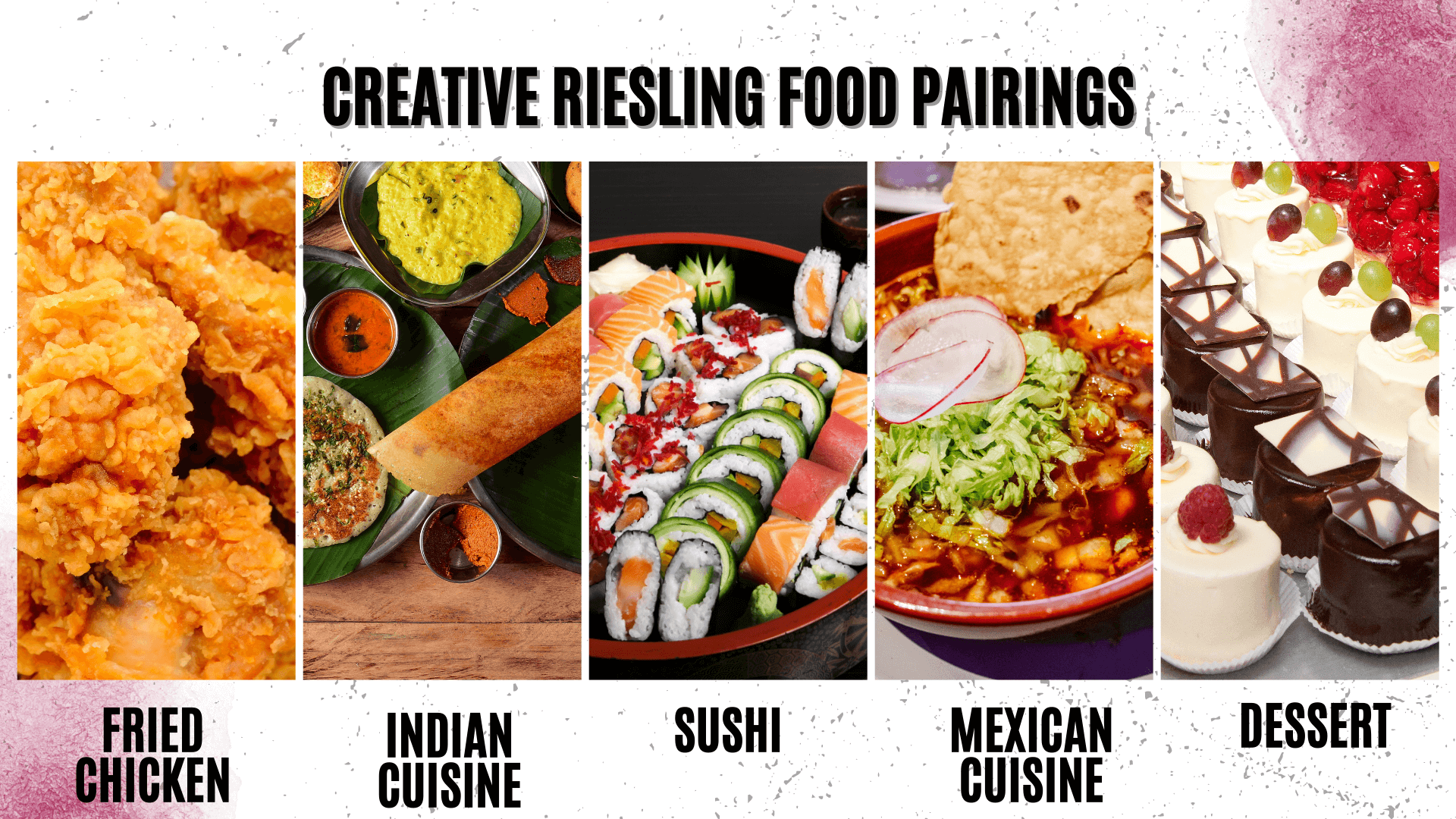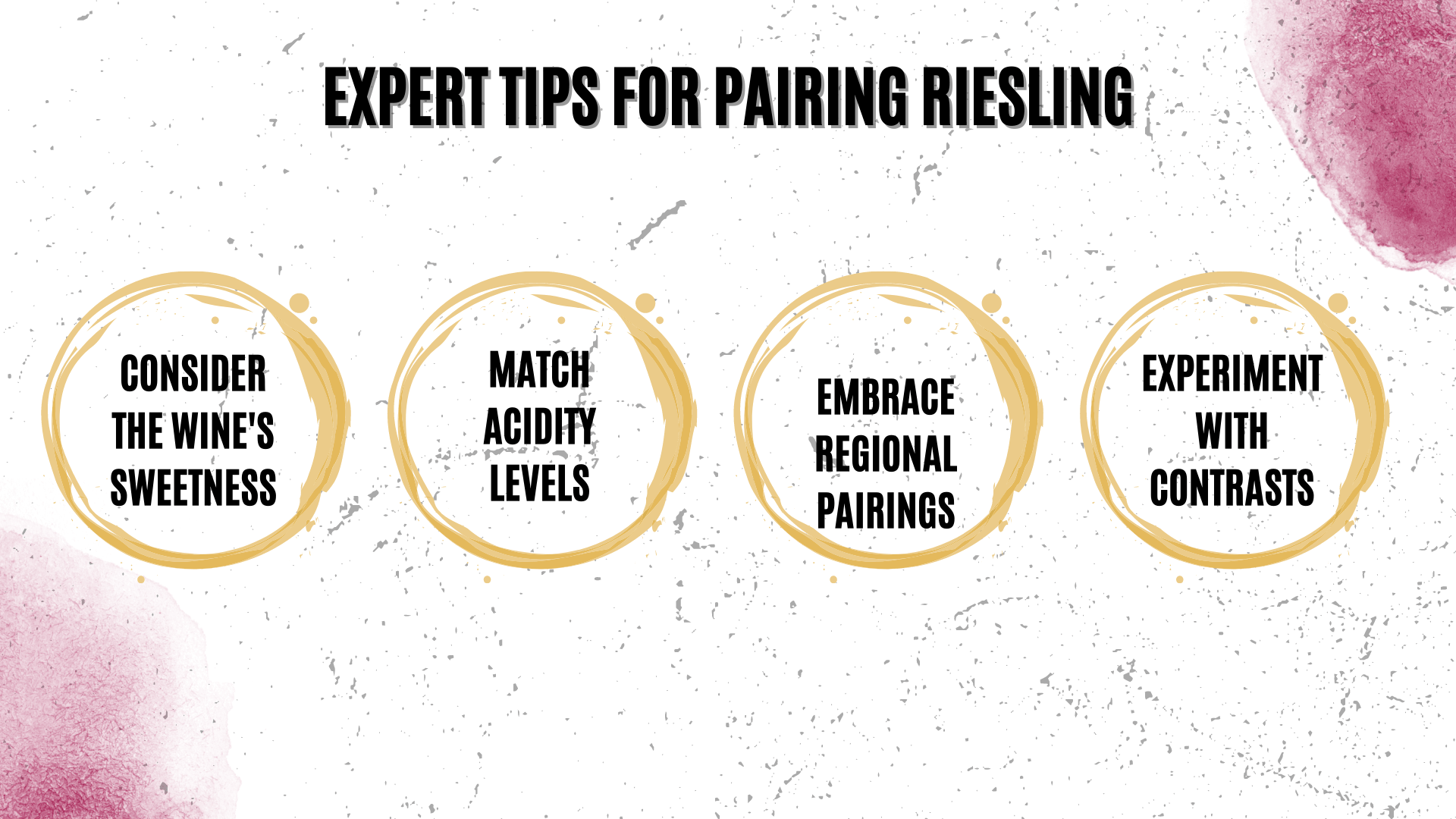Introduction
Riesling, a versatile and aromatic white wine, is celebrated for its diverse range of styles and ability to pair with a wide variety of dishes. Originating from the Rhine region of Germany, Riesling is now grown in many wine-producing regions worldwide. From bone-dry to lusciously sweet, Riesling’s high acidity and intense fruity flavors make it a popular choice for food pairings. In this comprehensive guide, we’ll delve into Riesling’s history, characteristics, and styles, along with expert tips and pairing suggestions for the perfect dining experience.
I. The History of Riesling
Riesling’s origins can be traced back to the Rhine region of Germany in the 15th century. Over the centuries, the grape has gained a reputation for producing high-quality, age-worthy wines, and its popularity has spread to wine regions such as Alsace, Austria, Australia, and the United States.
II. Wine Profile
Riesling is a white wine known for its high acidity, pronounced fruit flavors, and unique ability to express terroir. Common flavor notes include green apple, peach, and citrus, with secondary notes of petrol, honey, and mineral undertones. Rieslings can range from bone-dry to lusciously sweet, making them incredibly versatile when it comes to food pairings.
III. Characteristics of Riesling
Riesling is renowned for its lively acidity, bright fruit flavors, and distinctive minerality. The wine’s flavors can range from tart citrus to ripe stone fruits, depending on factors such as climate, terroir, and winemaking techniques. Riesling’s high acidity and variable sweetness levels make it a natural choice for pairing with a wide range of dishes, from spicy curries to rich desserts.
IV. Old World vs. New World Riesling
Old World Rieslings, primarily from Germany and Alsace, tend to be more delicate and mineral-driven, with higher acidity and lower alcohol levels. New World Rieslings, such as those from Australia or the United States, often showcase riper fruit flavors, with slightly lower acidity and higher alcohol content.
V. Factors to Consider for Riesling Food Pairings
Acidity: Riesling’s high acidity helps cleanse the palate and balance the flavors of a dish. This makes it an ideal pairing for rich, fatty, or spicy foods, as the wine’s acidity can cut through the heaviness and refresh the palate.
Sweetness: Rieslings can range from bone-dry to lusciously sweet. Consider the wine’s sweetness level when selecting a dish, opting for complementary flavors or contrasts that will enhance the pairing.
Fruit profile: Riesling’s fruit flavors can vary from tart citrus to ripe stone fruits. Take the wine’s fruit profile into account when choosing a dish, looking for flavors that will either complement or contrast with the wine’s fruitiness.
Minerality: Riesling’s unique mineral character can add an extra dimension to food pairings. Consider dishes with earthy or savory elements that will complement the wine’s minerality.
Body and intensity: Riesling can range from light and delicate to full-bodied and intense, depending on factors like terroir and winemaking techniques. Choose dishes that match the wine’s body and intensity to ensure a balanced pairing.
VI. Classic Riesling Food Pairings
Spicy Asian cuisine: Riesling’s bright acidity and fruity flavors make it a natural match for spicy Asian dishes, such as Thai curries or Szechuan stir-fries. The wine’s sweetness can help tame the heat, while its acidity refreshes the palate.
Pork: Pork dishes, from glazed ham to pork tenderloin, can pair beautifully with Riesling. The wine’s acidity cuts through the richness of the meat, while its fruit flavors complement the dish’s savory elements.
Seafood: Riesling’s bright acidity and fruity flavors work well with a wide variety of seafood, from delicate white fish to richer options like salmon or shrimp. The wine’s acidity can help balance the dish’s richness and enhance the seafood’s flavors.
Cheese: Riesling can be an excellent partner for various cheeses, including soft, creamy cheeses like Brie or Camembert, as well as tangy goat cheese or pungent blue cheese. The wine’s acidity and fruit flavors can complement the cheese’s richness and enhance its flavors.
German dishes: Riesling’s German origins make it a natural choice for pairing with traditional German fare, such as sauerkraut, bratwurst, or spaetzle. The wine’s acidity and fruit flavors can cut through the richness of the dishes and provide a refreshing counterpoint.
VII. Creative Riesling Food Pairings
Fried chicken: The bright acidity of Riesling can help cut through the heaviness of fried chicken, while its fruity flavors can complement the dish’s savory, crispy coating.
Indian cuisine: Riesling’s sweetness and acidity can help balance the bold flavors and heat of Indian dishes, such as curries, biryanis, or tandoori chicken. The wine’s fruit flavors can also complement the dish’s complex spice profiles.
Sushi: Riesling can be a delightful pairing for sushi, as its acidity and fruit flavors can complement the delicate flavors of the fish, as well as the tanginess of soy sauce and the heat of wasabi.
Mexican cuisine: Riesling’s bright acidity and fruity flavors can work well with Mexican dishes, such as fish tacos, enchiladas, or chiles rellenos. The wine’s acidity can help balance the dish’s richness and spice, while its fruit flavors can enhance the dish’s complexity.
Desserts: Sweet Rieslings can be an excellent match for desserts, such as fruit tarts, peach cobbler, or lemon meringue pie. The wine’s sweetness can complement the dessert’s flavors, while its acidity can prevent the pairing from becoming overly cloying.
VIII. Expert Tips for Pairing Riesling
Consider the wine’s sweetness: When pairing Riesling with food, it’s essential to take the wine’s sweetness level into account. A dry Riesling may work well with savory dishes, while a sweeter Riesling can complement spicy or sweet dishes.
Match acidity levels: Riesling’s high acidity can help balance rich, fatty, or spicy dishes, making it a versatile option for a wide variety of pairings.
Embrace regional pairings: When in doubt, consider pairing Riesling with dishes from regions where the wine is produced, such as Germany, Alsace, or Austria. Regional pairings often share complementary flavors and can lead to successful matches.
Experiment with contrasts: Riesling’s unique flavor profile can provide interesting contrasts with certain dishes, such as sweet and sour or spicy and fruity combinations. Don’t be afraid to experiment with unconventional pairings to find your own personal favorites.
Conclusion
Riesling’s high acidity, diverse range of styles, and pronounced fruit flavors make it an exceptionally versatile wine for food pairings. From classic matches with spicy Asian cuisine to more adventurous pairings with fried chicken or sushi, the possibilities are nearly endless. By understanding the characteristics and styles of Riesling, as well as following expert tips, you can elevate your dining experience and create unforgettable pairings that showcase this remarkable wine.
Frequently Asked Questions
No, Riesling comes in a wide range of styles, from bone dry to lusciously sweet. The sweetness level of a Riesling will depend on factors such as region, climate, and winemaking techniques. It’s essential to consider the wine’s sweetness when selecting a food pairing.
While Riesling is more commonly paired with lighter fare, such as seafood or poultry, it can work with some red meat dishes, especially when the dish has a lighter or fruit-based sauce. The key is to ensure the wine’s acidity and flavors complement the dish without being overwhelmed.
Riesling is best enjoyed chilled, typically around 45-50°F (7-10°C). This allows the wine’s flavors and aromas to be fully appreciated without being muted by excessive cold.
Once opened, a bottle of Riesling can be stored for up to 3-5 days if properly resealed and kept in a cool, dark place. Using a vacuum-sealed wine preservation system can extend the wine’s life by a few more days.


